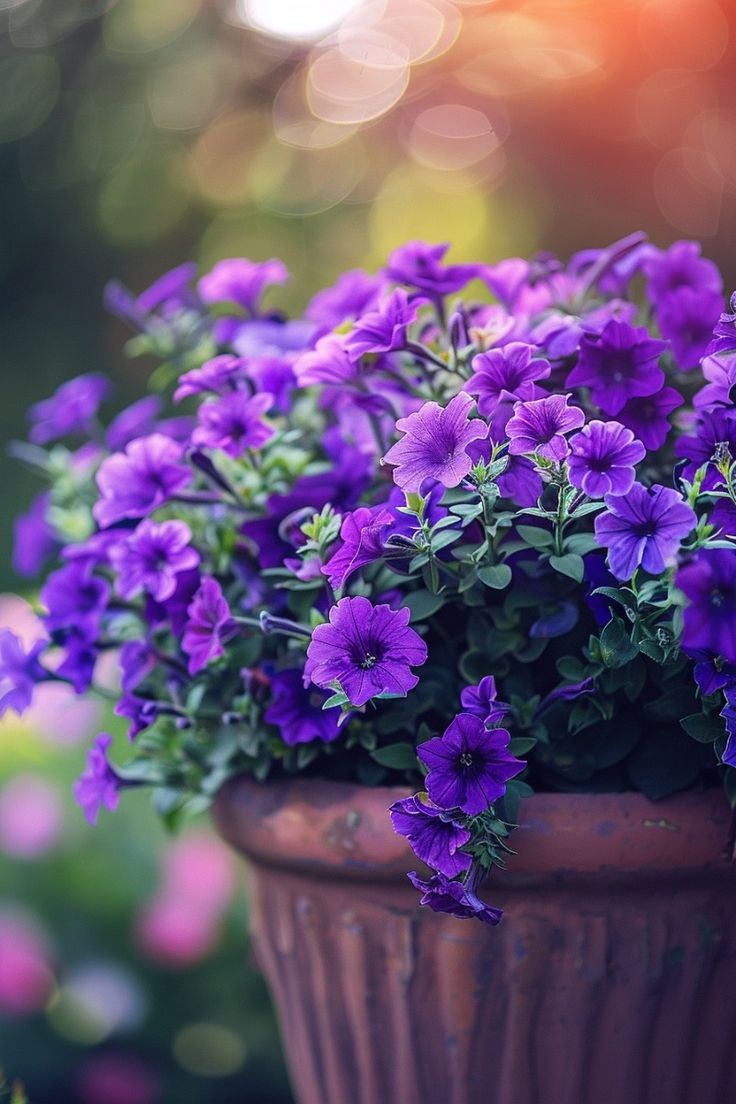23 Air-Purifying Potted Plants: Boost Your Indoor Air Quality Naturally!
Creating a healthy indoor environment starts with the air you breathe. One of the most natural and effective ways to improve air quality is by incorporating air-purifying plants into your home. These green powerhouses not only enhance the aesthetics of your space but also help remove toxins, increase humidity, and improve overall air quality. Here are 23 air-purifying potted plants that can naturally boost the quality of the air you breathe.
1. Spider Plant (Chlorophytum comosum)
Benefits: The spider plant is renowned for its ability to remove pollutants like formaldehyde and xylene. It’s also easy to care for and thrives in various light conditions.
Care Tips: Keep the soil moist but not soggy. It prefers bright, indirect light and can tolerate occasional neglect.
2. Snake Plant (Sansevieria trifasciata)
Benefits: Known for its air-purifying properties, the snake plant effectively filters formaldehyde, benzene, and other toxins. It also converts CO2 into oxygen at night, making it a great bedroom plant.
Care Tips: Allow the soil to dry between waterings. It thrives in low light and is very low-maintenance.
3. Peace Lily (Spathiphyllum spp.)
Benefits: The peace lily is excellent at removing VOCs such as benzene, formaldehyde, and trichloroethylene. It also helps to increase humidity levels.
Care Tips: Keep the soil consistently moist and provide it with low to medium, indirect light. It’s sensitive to drought and direct sunlight.
4. Boston Fern (Nephrolepis exaltata)
Benefits: This lush fern is known for its ability to remove formaldehyde and xylene. It also adds moisture to the air, making it a great choice for dry environments.
Care Tips: Keep the soil consistently moist and provide high humidity and indirect light. Regular misting can help maintain humidity.
5. Aloe Vera (Aloe barbadensis miller)
Benefits: Aloe vera helps to purify the air by removing formaldehyde and benzene. Its gel is also known for its healing properties and can be used for minor burns and skin irritations.
Care Tips: Water sparingly, allowing the soil to dry out between waterings. It prefers bright, indirect light.
6. Bamboo Palm (Chamaedorea seifrizii)
Benefits: The bamboo palm is effective at removing formaldehyde and benzene. It also adds moisture to the air and can thrive in low light conditions.
Care Tips: Keep the soil evenly moist and provide it with indirect light. It prefers a humid environment.
7. Rubber Plant (Ficus elastica)
Benefits: The rubber plant is known for its ability to remove toxins such as formaldehyde. It also helps to improve air quality and adds a touch of greenery to any room.
Care Tips: Allow the topsoil to dry between waterings. It prefers bright, indirect light but can tolerate lower light conditions.
8. Pothos (Epipremnum aureum)
Benefits: Pothos is highly effective at removing pollutants like formaldehyde, benzene, and xylene. It’s also incredibly easy to grow and adapt to various light conditions.
Care Tips: Water when the top inch of soil is dry. It can thrive in low to bright, indirect light.
9. ZZ Plant (Zamioculcas zamiifolia)
Benefits: The ZZ plant is known for its ability to tolerate low light and dry conditions while filtering out pollutants like xylene and toluene.
Care Tips: Allow the soil to dry completely between waterings. It thrives in low to bright, indirect light.
10. English Ivy (Hedera helix)
Benefits: English ivy is effective at removing formaldehyde, benzene, and other toxins. It’s also known for its ability to reduce airborne mold.
Care Tips: Keep the soil moist and provide it with bright, indirect light. It can be grown in hanging baskets or as a climbing plant.
11. Dracaena (Dracaena spp.)
Benefits: Dracaena plants, such as the Dracaena marginata and Dracaena fragrans, are excellent at removing formaldehyde, benzene, and trichloroethylene.
Care Tips: Allow the soil to dry between waterings. They prefer bright, indirect light but can tolerate lower light conditions.
12. Cast Iron Plant (Aspidistra elatior)
Benefits: True to its name, the cast iron plant is incredibly hardy and can remove pollutants like formaldehyde. It’s also known for its ability to thrive in low light conditions.
Care Tips: Water when the topsoil is dry. It prefers low to bright, indirect light.
13. Parlor Palm (Chamaedorea elegans)
Benefits: The parlor palm is effective at removing formaldehyde and adding moisture to the air. It’s also a great plant for low-light conditions.
Care Tips: Keep the soil consistently moist and provide it with indirect light. It thrives in high humidity.
14. Maidenhair Fern (Adiantum spp.)
Benefits: This delicate fern is known for its ability to remove formaldehyde and improve indoor air quality. It also adds moisture to the air.
Care Tips: Maintain consistently moist soil and high humidity. It prefers indirect light.
15. Swiss Cheese Plant (Monstera deliciosa)
Benefits: The Swiss cheese plant helps to purify the air by removing formaldehyde and other toxins. Its large, unique leaves make it a striking addition to any room.
Care Tips: Water when the top inch of soil is dry. It prefers bright, indirect light and high humidity.
16. Areca Palm (Dypsis lutescens)
Benefits: The areca palm is excellent at removing pollutants and increasing humidity. Its feathery fronds add a tropical touch to your space.
Care Tips: Keep the soil consistently moist and provide bright, indirect light. It thrives in humid conditions.
17. Lady Palm (Rhapis excelsa)
Benefits: The lady palm is effective at removing formaldehyde and benzene. It also adds a lush, tropical feel to any room.
Care Tips: Keep the soil moist and provide indirect light. It prefers high humidity.
18. Nerve Plant (Fittonia albivenis)
Benefits: The nerve plant helps to filter out toxins like formaldehyde and benzene. Its vibrant foliage adds color and texture to your space.
Care Tips: Keep the soil consistently moist and provide high humidity. It thrives in bright, indirect light.
19. Rubber Tree (Ficus elastica)
Benefits: Similar to its cousin the rubber plant, the rubber tree is effective at removing formaldehyde and adding a touch of green to your space.
Care Tips: Allow the soil to dry out between waterings. It prefers bright, indirect light.
20. Silver Pothos (Scindapsus pictus)
Benefits: Silver pothos is known for its ability to remove formaldehyde and xylene. Its attractive, silver-speckled leaves make it a stylish addition to any room.
Care Tips: Water when the top inch of soil is dry. It thrives in low to bright, indirect light.
21. Peperomia (Peperomia obtusifolia)
Benefits: Peperomia is effective at removing pollutants and adds a touch of green to your space. Its compact size makes it perfect for small areas.
Care Tips: Allow the soil to dry between waterings. It prefers bright, indirect light.
22. Burro’s Tail (Sedum morganianum)
Benefits: Burro’s tail helps to purify the air by removing toxins and adds a unique, trailing look to your space. It’s also very low-maintenance.
Care Tips: Water sparingly and allow the soil to dry out completely between waterings. It thrives in bright, indirect light.
23. Aloe Vera (Aloe barbadensis miller)
Benefits: Aloe vera helps to purify the air by removing formaldehyde and benzene. Its gel has healing properties and can be used for skin irritations.
Care Tips: Water sparingly, allowing the soil to dry out between waterings. It prefers bright, indirect light.
Conclusion
Integrating air-purifying potted plants into your home is an excellent way to enhance indoor air quality and create a healthier living environment. From the low-maintenance snake plant to the vibrant nerve plant, these 23 options offer a range of benefits and styles to suit any space. By choosing the right plants and providing them with proper care, you can enjoy the dual benefits of a cleaner atmosphere and a more beautiful, green living space.






